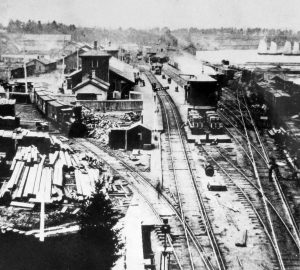The Movement Grows
James Ryan immediately set to work writing to workers in other major Canadian industrial centres, urging them to organize. He paid close attention to communities linked by the Great Western Railway and his efforts paid off. Over the next few months, workers in Toronto, Brantford, Dundas, Montreal, Oshawa, St. Catharines, Sarnia, Ingersoll, and Guelph set up Nine-Hour Leagues of their own. Activity in these communities ranged from public meetings and demonstrations to lock-outs and strikes.
Through the rest of the winter of 1872, the Hamilton Nine-Hour League also met with some success locally, convincing a few employers to grant the nine-hour day. These included the Great Western Railway, most of the city’s sewing machine manufacturers, the F.G. Beckett & Co. machine works, and Matthew Howles’s stove and tin works.
Attempting to harness this momentum, James Ryan and the Hamilton Nine-Hour League announced that on May 15th, Hamilton workplaces would be shut down while a “grand workingmen’s procession” wound its way through city streets. They declared that “nine hours shall constitute a day’s work.”



